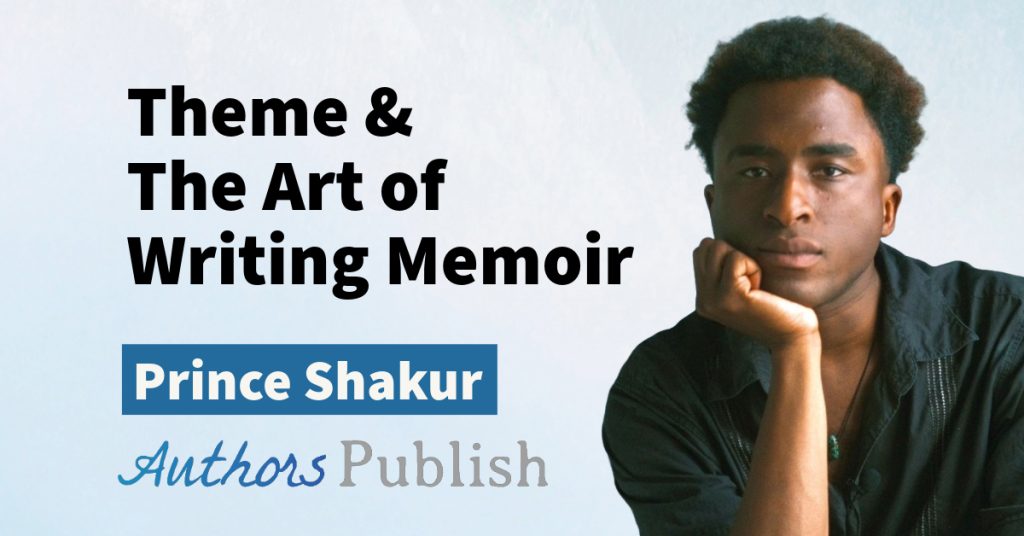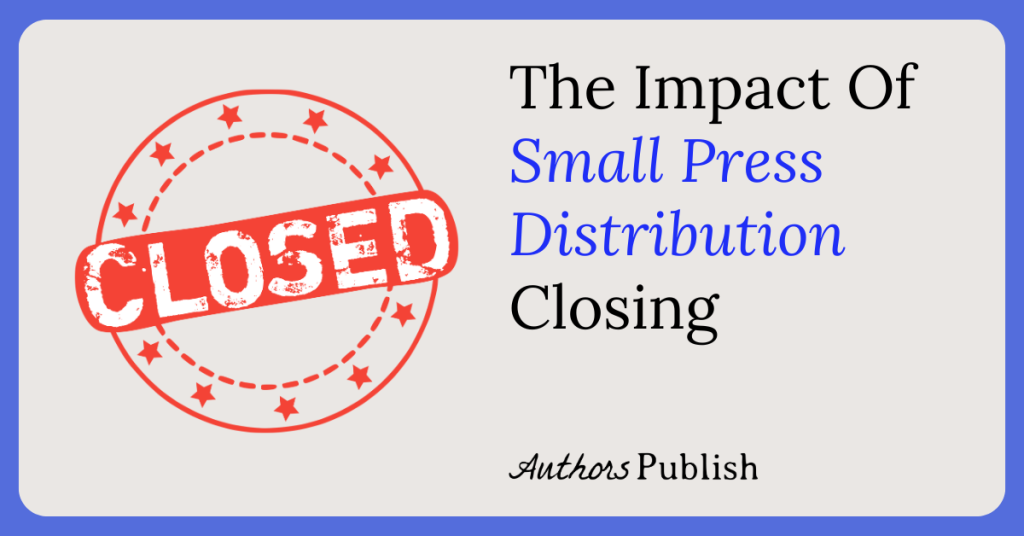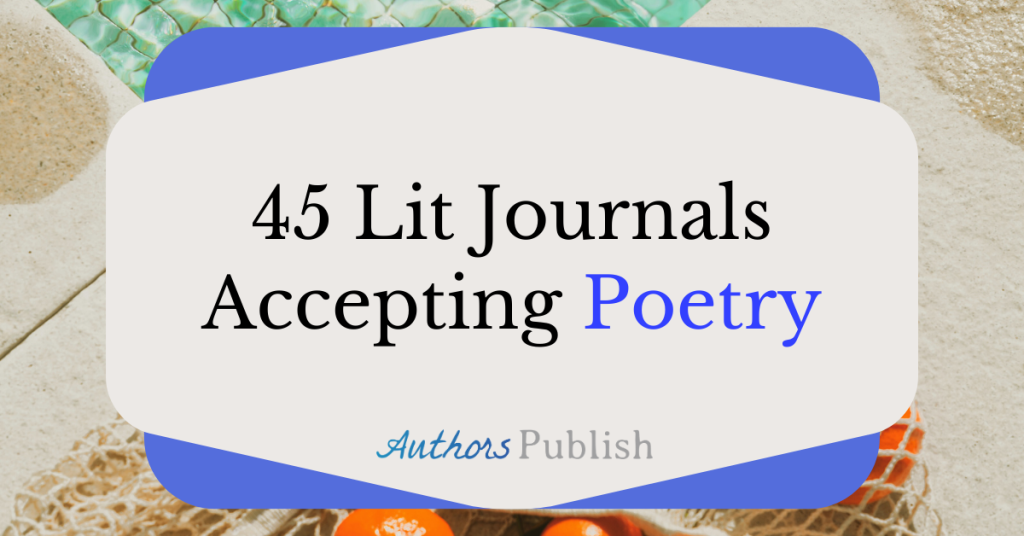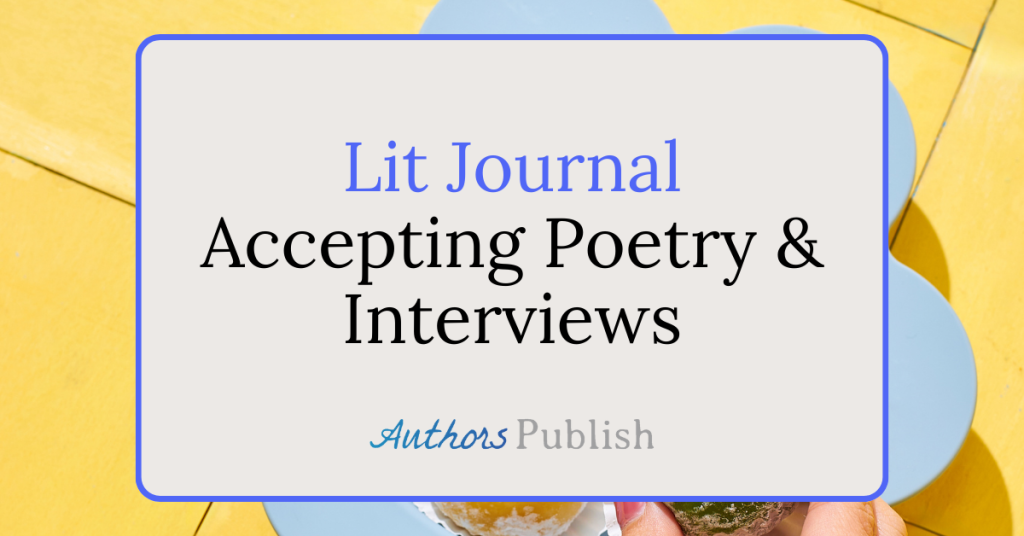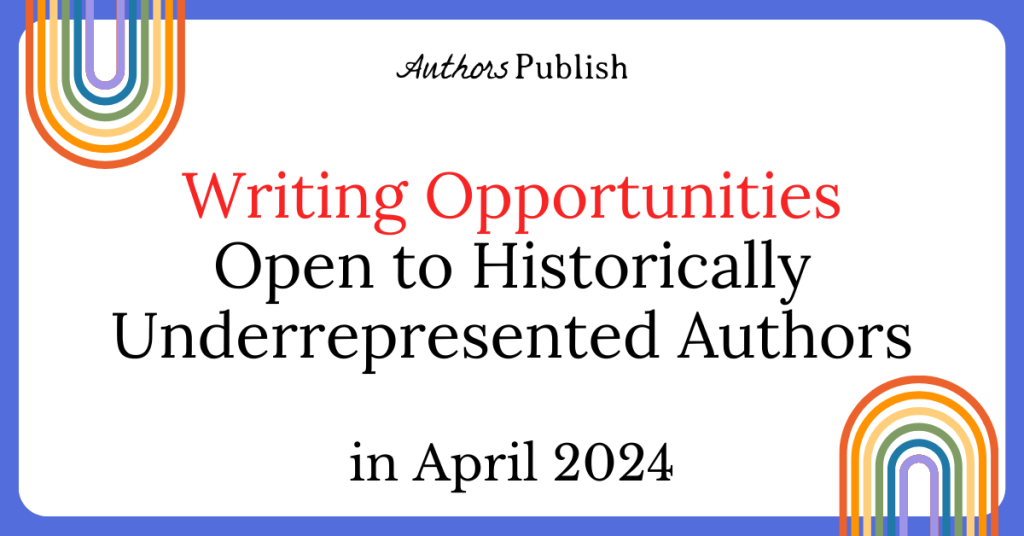We are a magazine that talks a lot about publishing, it is in our name, after all. So it might come as a surprise that I was a writer for over a decade before I realized the important role submissions play in being a writer. I don’t know why I expected an editor to arrive at my door with a request for my work.
In fact, if an editor or publisher you don’t know approaches you in order to publish a manuscript that you never submitted to them, it is not a good sign. It is a giant red flag. Legitimate traditional publishers don’t approach you. Thankfully, I have gotten to the point in my poetry career where editors at literary journals send me requests to publish my work, but those editors have seen my work published in other literary journals.
The fact remains that in order to get your work published you have to start submitting. Submitting takes time and patience. Most manuscript publishers take a minimum of two months to get back to you. The same goes for literary journals (although a list of journals that respond within a month is available here.)
The thing about publishing, particularly if you are publishing short stories and poetry, is that manuscript publishers expect you to have previously published at least some of your manuscript’s stories and poems in literary journals.
If you are novelist, publishing in literary journals is helpful but it is not expected to the same degree. If you want to publish a section of your unpublished or published novel in a literary journal this article might be very helpful to you.
This article is chock full of information and links to additional information that makes submitting accessible to anyone with some writing on their desktop. Even if you are early in your journey as a writer you lose nothing by submitting. You can also end up learning a great deal.
The article is divided into three parts. The first part focuses on literary journals, the second focuses on information that is helpful for publishing your manuscript traditionally, and the third section focuses on self publishing.
Even if you self-publish manuscript length work, publishing shorter work in literary journals can really help you legitimize your career as an author. You can promote your self published work in literary journals by including a link to it in the biographical statement that all literary journals include.
Literary Journals
Before you submit anywhere go through your work and pick out work that you would like to publish. If you have a hard time judging your own work I highly recommend joining a writing group and getting feedback from the members of that group. At first picking what to submit is the hardest part, but it gets easier over time.
After you have picked the work you are submitting it, spend time editing each piece that you are sure you are going to submit. If you are submitting to poetry publishers you generally submit between 3-5 poems to every journal. If you are submitting short fiction or non-fiction submit just one piece per journal. For more advice specific to poetry publishing this article is very helpful.
Most literary journals do not copy edit their work thoroughly. They expect it to be copy edited and polished before submission.
It is important to create a cover letter and bio that you can send out to all the literary journals. You should keep the cover letter and biographical statement in a file so you can easily use them again and again.
Your cover letter should be brief and to the point. It should be no longer than three sentences in length, unless the journal specifically requests additional information.
Most biographical statements should be 50 words in length or less. They are always written in third person. This article on biographical statements can help you work on composing yours.
The next thing you have to do is find a literary journal to submit to. We review at least one literary journal every week. But there are lots of other places you can find literary journals. A good place to start is The (Submission) Grinder.
Also, the lists we have published of journals that are approachable, and journals that are good for new submitters might be helpful.
Once you find a journal that seems right for your work, you have to actually submit your work. Most journals accept electronic submissions now, via email or submission manager, and both methods are easy to use. Make sure you follow the guidelines on the website when submitting. For example, if the literary journal says they do not publish poetry, don’t submit it. If they say they only accept .doc attachments, don’t send a PDF.
Once you have followed the literary journals guidelines and provided all of the information they have asked you for, all you have to do is press send (or place the stamped envelope in the mail).
Always write down what work you have submitted, where, and when. That way if your work is accepted at one place you don’t accidentally submit it elsewhere.
Now that most literary journals accept simultaneous submissions, it is easy to submit to multiple places at once.
Before you start submitting to literary journals you should read this article about the number one mistake most people make when they start submitting. Also this article focusing on the mistake that poet’s tend to make when submitting is also very helpful.
Traditional Manuscript Publishers
When I finish the first draft of a novel I always have a great surge of adrenaline. When I was younger I would enjoy the thrill of completion for days and then start on a new project. It should surprise no one that my early efforts were not published (thank goodness).
Now that I am older and wiser I know that the first draft is just that, a draft.
If you’re not sure if your work is a ready to submit, this article can really be helpful. It covers the three steps you need to follow in order to make sure that your manuscript is ready to be sent out to agents or publishers.
Once you are sure that your manuscript is ready, you can start submitting it. But realize that you still might have to make changes in order for it to be accepted by a publisher or an agent.
For a long time submitting seemed strange and mysterious to me. It seemed too overwhelming to actually do.
In fact, fact, for the most part submitting is relatively easy.
Most publishers want the same two things – a query letter and a synopsis. They also expect an excerpt of your book, generally the first two chapters.
There are specific requirements that differ from publisher to publisher and from agency to agency, however it is good to have a basic query letter and synopsis that you modify to meet the needs of the given agent or publisher. Just make sure you send the correct version to the right person, it really annoys a publisher to receive submissions with another publisher’s name on it. The same goes for agents.
You should spend a lot of time and consideration crafting the cover letter. This is the first impression you will make on agents and publishers. This article is very helpful to read before starting your cover letter. It is written from the perspective of submitting to agents, but all of that information can easily be applied to a small publisher as well.
It is important note that most publishers expect information about your author platform or marketing plan. Don’t know where to start in terms of an author platform? Building an Author Platform by Chantelle Atkins is a great place to start.
If you meet a publisher or an agent directly at a conference, most want a pitch. A pitch can also be handy to include in your cover letter. Don’t know what a pitch is? This article talks about what a pitch is, and more importantly, how to make a good one. I always include my pitch in my cover letter.
Not all publishers and agents require a synopsis, but many do. Most want a complete synopsis of the plot that fits on one page. By complete synopsis, I mean that they want spoilers. They also generally want information about character development.
It should go without saying, but edit and polish the query letter and synopsis. If you can afford an editor get them to review the query letter, the synopsis, and also the first twenty pages. Twice. Or more. The first twenty pages of the novel are all that most agents and many publishers will initially see, so make sure they are compelling and error free.
M.J. Moores interviewed a literary agent, an editor, and a published author to see what the top reasons most manuscripts are rejected. Her article The Top Three Reasons Most Manuscripts get rejected, should be read before you begin the submission process.
Once you have completed a query letter and a synopsis, that you are happy with start to research where you are going to submit your book. You can start your research earlier if you want.
You should decide early on if you want to submit directly to publishers or if you want to submit to an agent.
If you are focusing on finding an agent you should read the article The Safest Way to Search For an Agent before proceeding. One of the best free reputable search engines for agents is Agent Query. So you can start looking for an agent there.
If you are looking at submitting a manuscript directly to a publisher, our index of manuscript publishers is a good place to start. We always check Preditor and Editors and other watchdog site before reviewing a publisher.
Remember there is no such thing as a legitimate traditional publisher that charges its writers. You should be paid by your publisher, not the other way around.
When examining a publisher’s website this article will help you know what to keep an eye out for.
Some publishers can respond to submissions within weeks, others within years, so keep that in mind. If you have not heard from a publisher in six months, you should email them to ask about the status of the manuscript, unless they explicitly say they will take longer on their website.
Once you find agents or publishers that you feel would be a good fit, you should check and double check their submission guidelines.
Most publishers accept electronic submissions through email or a submission manager, but a few still require submissions through the post. Either way, the publishers submission guidelines should walk you through the steps. The same goes for agents.
It is important not to submit to an agent or publisher if they say they are closed to unsolicited submissions. Your manuscript will not be read and in all likelihood you will annoy the person or persons who receive it, which could hurt your chances in the future.
Also be careful about querying. If they say do not query, don’t. If they say don’t query till six months have passed, follow their instructions. I’ve had people query me within 24 hours of submitting their work. It did not make a positive impression on me.
Self Publishing
This is the only route where you entirely avoid the submission process. When you self publish you become the publisher by saying yes to your own work.
I am going to be very clear out the two biggest pitfalls of self publishing. The first is that many people conflate self publishing with vanity publishing (which I do not recommend). The second is that once you self publish a book very few traditional publishers will be open to publishing it (unless you sell a ton of copies).
If you want to traditionally publish I really encourage you to submit your manuscript to agents and/or publishers first, and if that doesn’t work consider self publishing. If traditional publishing is not your goal, dive right into self publishing. The cheapest way to self publish (in fact it is free) is electronically. Kindle Direct Publishing (KDP) is a good place to start, although there are other options as well. But most authors want their books available to read on Kindle because it is the most popular eReader and app for reading books.
KDP’s website walks you through the process and usually books are available on the marketplace within 24 hours. It doesn’t get much faster than that.
If you really want to have physical copies of your book, CreateSpace is easy and intuitive to use. It is also rather reasonable. You only pay for the copies of the book that you want. Every self published author I know who used other print on demand services has over time switched to CreateSpace, the same goes for most small presses that print on demand. They do a good job.
The important thing if you are self publishing is to know that if you want to sell a lot of copies you are going to have to do at least two things. The first is make sure that your book looks professional.
This involves professional editing. It is much cheaper to use an editor you find rather than relying editing provided by a larger company (such as CreateSpace). It is also important for your book to be properly formatted and to have a good cover.
The second thing that you have to do is be prepared to promote it. We have published various articles on the art of book promotion which you can read here.
In Conclusion
If you need a little bit more encouragement before you start submitting or some encouragement to keep going, this article on How To Deal with Rejection is very helpful.

